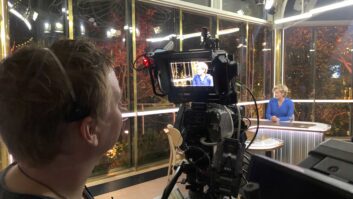
Nevion has provided a fibre transport solution using its Flashlink product family to bring live HD video and research data from deep under the ocean to the world-renowned Monterey Bay Aquarium Research Institute (MBARI).
Installed by the Woods Hole Oceanographic Institution, a Flashlink frame containing ETH-1000 Gigabit Ethernet-to-fibre converters operating on DC power is submerged 900 metres) below the surface of the Pacific Ocean at Monterey Bay in California, one of the most biologically-diverse bodies of water and one of the deepest underwater canyons along the continental United States. A 32-mile (52km) long fibre-optic cable connects the undersea equipment to a second Flashlink frame on the shore, which is identical except for running on AC power.
The solution provides two bi-directional Gigabit Ethernet connections between the two units for transporting HD video over IP from remotely-operated underwater vehicle cameras and telemetry data from research instruments on the ocean floor. The videos and telemetry data are used by scientists and engineers conducting deep-sea research and ocean engineering.
The installation is part of MBARI’s Monterey Accelerated Research System (MARS) Ocean Observatory Test Bed. With traditional oceanographic instruments on the seafloor having to run on batteries and store their own data, it’s impossible for researchers to know whether their instruments are working properly or to control them while experiments are underway. By providing electrical power and data connections, the MARS cabled observatory removes these restrictions, allowing scientists to study the ocean in new ways. The high-speed data connection allows researchers to receive large amounts of data, including digital video streams, and control and assess their instruments – all in realtime.
“This installation is testament to the reliability of our Flashlink solutions and their ability to transport video over long distances in any kind of environment, and with the lowest power consumption,” said Oddbjørn Bergem, CEO at Nevion. “Designed to solve the most mission-critical signal transport applications, Flashlink performs equally well whether half a mile under the ocean or in the most demanding of broadcast environments.”
The photograph shows the Benthic Rover, a robot that was hooked up to MARS, illuminating the seafloor with a blue light that causes chlorophyll to fluoresce. Such fluorescence can help scientists tell if blooms of microscopic marine algae have recently settled down onto the seafloor, where they may provide food for deep-sea organisms. (c) MBARI







